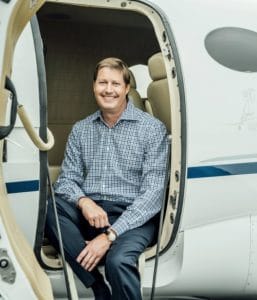Alaska Helicopter Tour Company at the Heart of a Crash that Killed Five will Face Close Scrutiny of Systems and Procedures
The fatal crash Saturday, March 27, of a tour helicopter near Knik Glacier, in the rugged mountainous region northeast of Anchorage, Alaska raises numerous safety questions about the helicopter tour operator at the center of the incident.
Five people on board the Airbus AS350 B3 helicopter died when the aircraft crashed while conducting a heli-skiing flight. One person survived and is hospitalized. The National Transportation Safety Board (NTSB) is investigating the incident and has not yet released a cause at this time. Prominent Czech billionaire businessman Petr Kellner was one of the five people killed in Saturday’s crash.
The aircraft was owned and operated by Soloy Helicopters of Wasilla, Alaska, which performs precision long-line and remote area operations, including heli-skiing.
 “The aircraft condition, service record, modifications, and suitability for the assigned mission need to be examined closely,” said Ladd Sanger, an aviation attorney with Slack Davis Sanger in Austin, Texas, and licensed helicopter pilot.
“The aircraft condition, service record, modifications, and suitability for the assigned mission need to be examined closely,” said Ladd Sanger, an aviation attorney with Slack Davis Sanger in Austin, Texas, and licensed helicopter pilot.
The helicopter was ferrying passengers from the Tordrillo Mountain Lodge, in Judd Lake, Alaska, to the mountains in the region near the glacier for remote skiing. Reports showed that the crash site was located in steep, snow-covered terrain.
Sanger said that the NTSB investigation will examine the weather conditions, training, experience, judgment, and previous record of the Soloy Helicopters pilot, as well as the instructions, rules and discretion the company’s management followed and communicated to the pilot.
“In the best of conditions, helicopter tour operations in remote mountainous areas like Alaska can be risky, and the high probability of sudden changes in weather or visibility poses an increased danger,” Sanger said. “Our firm has handled several Alaska helicopter crashes that occurred because the clouds and white snow-covered mountains caused the pilot to lose visual horizon reference, resulting in spatial disorientation. The results can be deadly.”
The AS350 B3 is a high-performance, single-engine helicopter typically operated by a single pilot. The aircraft has seating capacity for up to six, including the pilot. The AS350, otherwise known in North America as the AStar, is a heritage design of Aerospatiale, a French helicopter manufacturer that later became Eurocopter and, in 2013, was moved under the Airbus umbrella. Various versions of the AS350 have been produced in both France and in Airbus plants in the U.S.
Some AS-350 helicopters have been modified with an engine-inlet barrier filter modification developed by a Soloy company based in Oregon which has been implicated in previous AS350 accidents. Sanger represented the family of the flight nurse who was killed in a 2013 Airbus AS350 crash in Oklahoma City. The NTSB determined the cause to be ice trapped in the air inlet of a Soloy-modified filter, which was ingested during the flight causing the engine to fail. The barrier filter system allows water to pass through the filter then freeze inside the filter. The frozen ice can then be ingested into the engine causing the engine to flame out.
To determine the circumstances and likely cause of the crash, NTSB investigators will examine the crash site and wreckage, flight records of the aircraft and pilot, and weather conditions at the time of the accident. Data and voice recorders have become widely available for even smaller helicopters over the last decade but are not required to be installed on older versions.
Slack Davis Sanger attorneys have litigated numerous helicopter and plane crashes in Alaska that were the result of pilot error, negligence on the part of the pilot or maintenance workers, air traffic control error, unsafe flying conditions (including inclement weather), defective aircraft parts, or poor aircraft design. The firm’s aviation attorneys are active licensed pilots, whose hands-on knowledge and cockpit experience deliver keen insight into what causes aviation accidents and air crashes, especially the relationships between pilots, aircraft, weather, and air traffic control.
